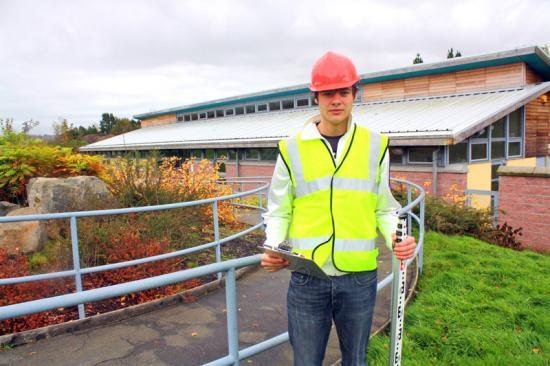Wick local takes part in architectural challenge
11th November 2010

First year students at Aberdeen's Scott Sutherland School of Architecture and Built Environment recently enjoyed a week of activities aimed at helping them adjust to University life. Among them was Wick local, Peter Adamson, who began the BSc Architectural Technology degree programme in September this year.
On Monday 25 October, students of both architecture and built environment disciplines began the week by attending a number of talks on sustainable design delivered by a group of students of the School who recently returned from a trip to Dehli, where they worked on designing a school / community centre for a local charity.
This was followed by a study visit and guided tour of Findhorn College and the Findhorn Foundation, the eco-village and spiritual community based in Moray, where the students learned about the sustainable buildings there.
The week culminated in the 'Built Environment Entrepreneurial Challenge'. This design competition saw multi-disciplinary teams, comprising students in subject areas from architecture to quantity surveying to architectural technology, devising an exciting new use for a disused building - the former children's nursery building on the University's Garthdee campus.
After an initial brainstorming session one of the ten student teams decided to find ways for the building to be deconstructed and sent to Haiti where it would provide much needed shelter following January's earthquake. The panelling system that the nursery is constructed from allows it to be reassembled in a number of arrangements. The team decided it would be best to split the building into two separate units.
Peter Adamson (18) from Sibster, Wick, was one of the students involved in the project. He said: "We chose to redesign the building for the Haiti disaster relief following what we had learned earlier in the week about flexible and sustainable architecture. We initially considered the need for eco-villages and orphanages in Africa and this led to considering the needs of other areas of the world affected by catastrophe.
"The week-long project has been really interesting, and the opportunity to work on a real-life project within a fully multi-disciplinary team has been a really worthwhile exercise."
Neil Lamb, Senior Lecturer at the School, said: "Although this is an entirely hypothetical design problem, it deals with some very real issues and problems which are all too prevalent in the world today.
"Although the students were encouraged to allow their imaginations free reign, and engage in some blue sky thinking, this is not entirely at odds with their practical training. For example, the quantity surveyors were charged with coming up with costings for the plan, while the architects created posters and drawings as the visual evidence of their ideas.
"By opening the boundaries and engendering such creative thinking, we hope to encourage the students to reflect on their practice with a fresh perspective," concluded Neil.
The Head of the Scott Sutherland School, Dr David McClean, said: "This initiative builds on the incredibly resourceful work of our students who displayed great entrepreneurial spirit and humanity through their charitable work in Delhi this summer, and serves a number of important purposes.
In particular it encourages cross disciplinary interaction at an early stage, both academically and socially, develops greater understanding of issues of sustainability pertinent to our fields of study, and fosters a sense of social responsibility made manifest through creative output".
